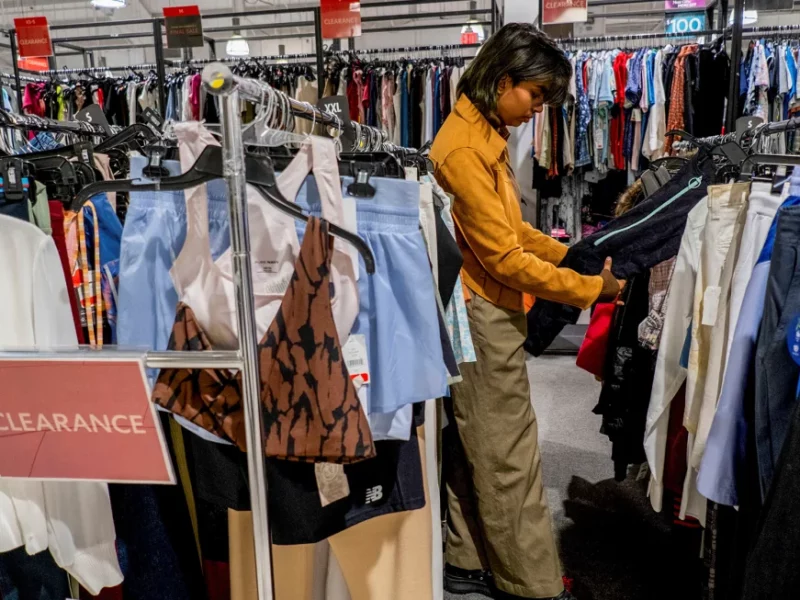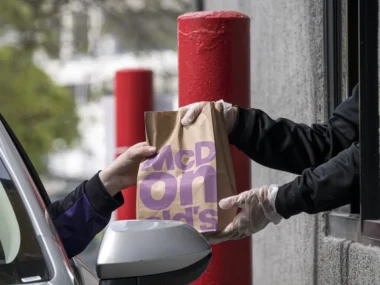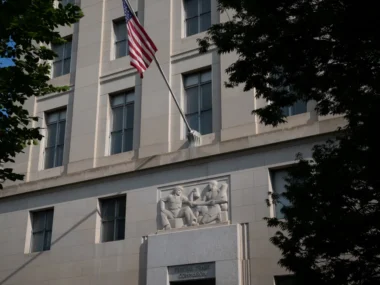In November, spending at U.S. retailers rebounded after experiencing a decline in October, signaling the ongoing strength of the U.S. consumer and a robust beginning to the holiday season.
According to the Commerce Department’s report on Thursday, retail sales, which are adjusted for seasonal variations but not inflation, increased by 0.3% in November compared to the previous month. This exceeded economists’ expectations of a 0.2% decrease, as reported by FactSet. This rebound comes after October saw a contraction in retail sales, marking the first monthly decline since the spring.
When excluding sales at gasoline stations, retail sales showed an even more robust growth of 0.6% last month.
Retail spending has experienced monthly declines only three times since January, highlighting the remarkable resilience of consumer spending throughout the year.
In November, sales saw growth across most categories, with the most significant increase observed at restaurants, where spending surged by a robust 1.6%. Americans also made solid expenditures at specialty stores and online retailers. On the other hand, sales at gasoline stations saw the most substantial decline in November, dropping by 2.9%.
Thursday’s report underscores that Americans are continuing to spend as inflation eases and the job market remains strong. This trend is occurring despite the backdrop of the highest interest rates in 22 years and a slowing pace of economic growth.
The deceleration of inflation is bringing relief and optimism to Americans.
In the United States, inflation has started to decelerate once more during the autumn season after accelerating over the summer due to increased energy costs, which have notably eased in recent weeks.
According to the Labor Department’s report, consumer prices in November were 3.1% higher than the previous year, slightly lower than the 3.2% increase seen in October. November’s annual inflation rate was significantly below the four-decade high reached in the middle of the previous year.
Furthermore, real average hourly earnings saw an increase of 0.8% in November compared to the previous year. This marks the eighth consecutive month of growth, following 24 months of negative growth, according to Labor Department data.
The renewed slowdown in inflation, coupled with increasing confidence that this trend will persist, has had a positive impact on the outlook of Americans, as reflected in the University of Michigan’s latest consumer survey. Sentiment in the survey surged by 13% this month, primarily due to improvements in the expected path of inflation, according to the university’s release. Nonetheless, this doesn’t rule out the possibility that Americans may be opting for more cost-effective alternatives even as they maintain a robust pace of spending.
The labor market continues to display strength, but its endurance is a question for the future.
A robust job market results in equally strong spending.
In November, the U.S. economy generated 199,000 jobs, a substantial gain when viewed in historical context, and the unemployment rate for that month dropped to a low of 3.7%. Additionally, wage growth showed an increase in November.
While the labor market has decelerated from the robust conditions seen in 2021 and 2022, it remains solid. According to the latest economic forecasts released by Federal Reserve officials, the unemployment rate could inch up to 4.1% next year.
Bill Adams, the Chief Economist at Comerica Bank, emphasized that the broader perspective indicates that American consumers are maintaining their spending, thereby supporting economic expansion. He noted that most Americans who desire employment have secured jobs, with high confidence in the labor market. Moreover, the decline in gasoline and energy prices is providing consumers with more resources to allocate to various spending categories.
However, it remains uncertain whether the job market’s notable resilience will persist throughout 2024. Americans are gradually utilizing their pandemic savings, and some are taking on additional debt as they begin to repay student loans. Furthermore, job openings experienced a decline in October, reaching their lowest level in two years. Although initial jobless claims remain low, there has been an increase in applications for ongoing unemployment benefits in recent months. The Labor Department reported that continuing claims rose by 20,000 to 1.876 million for the week ending on December 2 in a separate release on Thursday.











